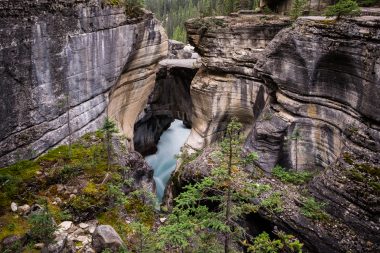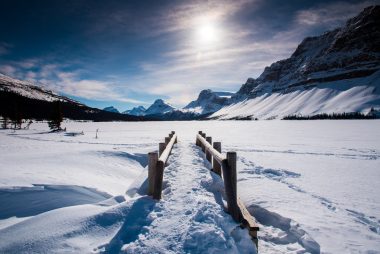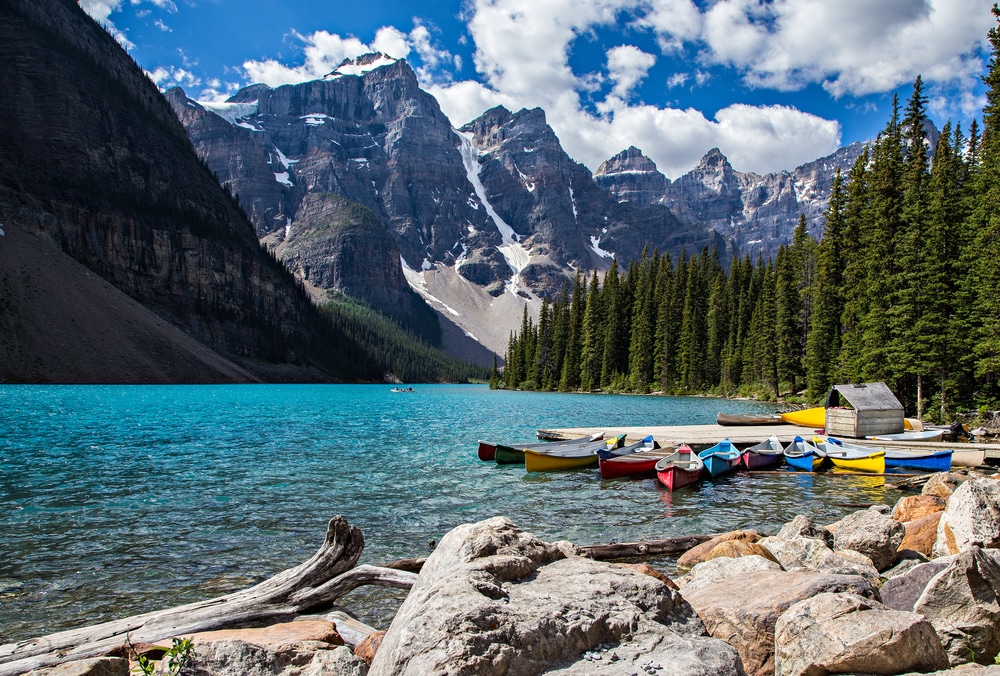West of Calgary, in the breathtaking landscapes of the Canadian Rockies, lies the more than 6,600 square kilometer area of Banff National Park. As one of the world’s oldest protected areas, the roots of the reservation in the province of Alberta date back to 1885.
Towards the end of the 19th century, when the Canadian Pacific Railway was to run through the region, a hot spring was discovered during construction work, which lay in an underground cave basin. Since the two men, who at the time were financially strong investors responsible for the construction of the railway, came from the Scottish region of Banffshire, the newly created village near the spring was given the name Banff. When disputes arose among the discoverers of the spring about the use and exploitation of the landscape, the Canadian government declared the region a protected area without further ado and expanded the total size of the national park over the next few years. Due to the new situation, the Canadian Pacific Railway had to take a detour through a route further south.
Banff National Park – UNESCO World Heritage Site

In the mid-1980s, Banff National Park, along with other nature reserves in Canada, was incorporated as part of the Rocky Mountains, a UNESCO World Heritage Site. Even at that time, the permanent protection of the unique fauna and flora was in the foreground. Around 250 bird species, including numerous migratory birds, use the many lakes and rivers of the site for resting or breeding. The national park is home to the mighty grizzly and the black bear.
Coyote, lynx and wolf go hunting for prey here. In addition to the resident elk, a large species of deer, moose can be observed in the wooded plains or bighorn sheep and mountain goats move on the hills and steep slopes of the Rockies. As late as the middle of the 19th century, huge herds of bison roamed the valleys. The merciless hunting by humans led to the extinction of the North American buffalo in a very short time. It was only in 2017 that some animals that came from another Canadian nature reserve were released into the park in the park, so that those responsible and visitors can now look forward to calves born in the protected area of the animal that was once so valuable to the Native Americans.
Between tourism and nature conservation
In the urban and modern fabric of the 21st century, Banff National Park has to master the balancing act between the concerns of nature conservation and mass tourism. The picturesque peaks of the Rocky Mountains, the turquoise glacial lakes, the Bow River, which stretches for hundreds of kilometers, charming villages and unforgettable landscape impressions attract around 4 million visitors to the national park every year.

In addition to those seeking relaxation, individualists, nature enthusiasts and active holidaymakers, the region is also a popular destination for family or group travel. Within the national park boundaries are three important ski resorts: the winter sports regions of Mount Norquay, Sunshine Village and Lake Louise, which is known beyond Canada’s borders. In addition to popular sports, hiking, cycling, mountaineering or extensive canoe and kayak tours are among the most popular leisure activities. One of the absolute highlights is a visit to the “Cave and Basin National Historic Site”, the hot spring and the birthplace of Canada’s first national park.
It does not always seem easy to reconcile the effects of tourism on nature and the constant harmonisation of both areas into a sustainable consensus. The park administration and the numerous rangers rely on meaningful involvement and personal responsibility of the guests.
There are many explanatory exhibitions and guided tours. In addition, visitors can walk in the historical footsteps of the indigenous people and the first settlers. The “Banff Park Museum” shows an impressive cross-section of botany, wildlife and living conditions in the Wilhelminian period in over 5000 exhibits. Whether on foot, by bike on around 1600 kilometers of hiking trails or by car, Banff National Park has something for everyone. Numerous accommodation options in hotels, apartments, lodges or on one of the 14 campsites offer plenty of variety for a stay full of incomparable atmospheres, impressions, photo motifs and very special travel moments


